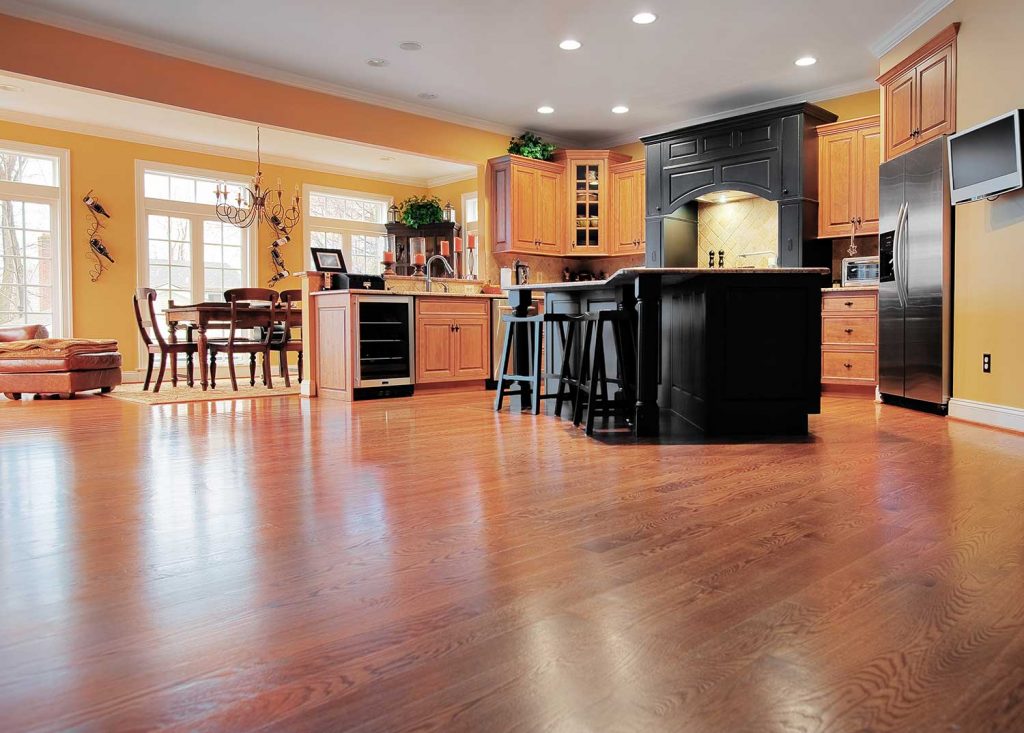In all the considerations of making the switch to radiant heat, one of the last might be the type of thermostat required to operate it. However, you must know what, if any, special thermostat would be required to operate your new heating system. Does radiant underfloor heating require a special thermostat? We've done some research and have the best information for you.
When it comes to radiant heat, you need a thermostat that is easily adjustable and smart enough to not overheat your home. So, it is best to get one made specifically for radiant heat. That being said, some thermostats work with a traditional system as well as radiant heat, and you need to ensure the thermostat you are purchasing will work with the type of heat system you own. Some popular brands compatible with radiant heat are made by SunTouch, ecobee, Honeywell, and Nest. You must also keep in mind whether your underfloor heating is hydronic or electric.
Now that we've established that there are many varieties of thermostats you could use for your radiant heat, let's discuss some product options in more detail. Continue reading to learn more about special thermostats, how to set them for radiant heat, what temperature it should be set at, and more.

What Makes A Thermostat Compatible With Radiant Heat?
Ideally, the thermostat you choose to control radiant heat will have a floor sensor. This floor sensor constantly knows the temperature of the floors, so that way they do not become too hot or too cold. Additionally, a thermostat created for hydronic radiant heat needs to be able to control the water heater as well, as this warm water is what delivers the heat to your floors.
For electric radiant floor heat, the thermostat needs to be a basic line voltage thermostat. If there's ever a question as to whether or not the thermostat is compatible, consult the user's manual or contact the manufacturer. Remember to always check the maximum voltage allowable by the thermostat to ensure you are in electrical compliance to avoid overload.
SunTouch
The SunTouch thermostat that works for radiant heat is a smart thermostat. It is WiFi-enabled and can be accessed from outside of your home. This model has a floor sensor as well as an option room-temperature sensor and works with electric radiant heat. It is programmable for up to 7 days in advance. Additionally, it comes with an adjustable screen so you can change the color to match your interior design.
View this thermostat on Amazon.
ecobee
The ecobee offers a lot of smart features. It has sensors to automatically know if you are home or away, and will automatically adjust the temperatures based upon that. It also offers voice control and remote room sensors. This model works well with hydronic radiant heat systems. Although this is one of the pricier options available, it is one of the most sophisticated thermostats on the market.
View this ecobee thermostat on Amazon.
Honeywell
TH115-AF-GA/U
This thermostat is suitable for electric radiant floor heating systems only. It does have a floor sensor which means it will maintain the temperature of your floors quite accurately. On top of that, you can program the thermostat for up to seven days in advance, so that means you can have the temp set according to when you will be at home and when you will not. Additionally, this thermostat is for resistive load only, so ensure your radiant heat is resistive load.
View this Honeywell thermostat on Amazon.
Aube by Honeywell TH140-28-01-B/U
This alternative option by Honeywell works with hydronic radiant floor heating and offers the same features as the one described above. This is a thermostat that works with central heating as well.
View this thermostat on Amazon.
Nest
Google's offering, the Nest thermostat, is lauded to be the best smart thermostat for your home. Nest has a "true radiant" feature which allows it to work with underfloor heating. Information gleaned from browsing Google Nest's support site indicates the same thermostat can be used for central heat and air as well as radiant heat simultaneously, though many of the reviews seem to differ on this opinion. If you're running a hybrid system, it's best to check with a contractor to ensure proper installation and support.
Since this is a "smart" thermostat, it is WiFi-enabled and can be controlled from outside of your home. You can purchase accessories to detect and transmit the temperatures in each room of your house. If you're impressed by high-tech gadgets, the Nest is a good option for you, although it is not the best option for radiant heat as it does not have a floor sensor.
View this thermostat on Amazon.
How Many Thermostats Do You Need For Underfloor Heating?
One of the advantages of radiant heat flooring is the control you can have over different parts of your home by setting up multi-zone areas with separate thermostats.
This is a personal preference, as you can set up the entire system to be controlled by one thermostat. However, by having multiple zones with their own thermostat, those separate rooms and areas can be adjusted due to their size or inhabitants.
Having separate thermostats may mean more managing, but it could save you a ton on energy costs. If your thermostats are programmable, you can set certain rooms to warm at certain times, such as a bathroom during the morning rush or bedrooms at night.
Wondering what flooring type is best for radiant heat? Read our post, What Flooring Type is Best for Heated Floors?

How Do You Set Your Thermostat For Underfloor Heating?
To set your thermostat for radiant underfloor heating, you'll need to consult the manufacturer's instructions on how to program your model. There are many different models available and all do bear some similar steps. Here is an instructional video on how to set a SmartStat radiant heat thermostat:
Additionally, here's a user-friendly video on how to connect your radiant heat flooring to a thermostat:
Please do not attempt dealing with electrical wiring unless you are experienced or have thoroughly reviewed the manufacturer's instructions. As always, when in doubt, contact a professional.
At What Temperature Should Radiant Heat Be Set?
Setting the floor temperature to between 80-85 degrees is ideal and then adjust it from there. Since underfloor heating radiates, the actual temperature of the room will be much cooler than that to which their thermostat is set. Most radiant heaters go up to over 100 degrees for those who want it super toasty.
Personal preference and comfort level has a lot of bearing in this decision, but remember that one of the benefits of radiant heat is the savings on energy costs. Allow it to warm the room and avoid jacking up the thermostat before giving the heater adequate time to do what it does best.
To read more about room temperature and radiant floor heat, read our post, Does Radiant Heat Warm the Air?
In Closing
Radiant floor heating doesn't require one particularly special thermostat. Many thermostats handle regular HVAC systems as well as radiant heat. As long as you are checking the specifications, following instructions, and proceeding with safety, you are sure to find the best option for you and your family, whether that be a smart thermostat or the most basic variety. Take your time searching, and enjoy your toasty warm feet with your radiant underfloor heating!






What about 24v thermostats and 2 wire thermostats? I have radiant floors with 24v thermostat, 2 wires and a really old Honeywell that I want to upgrade and so far I tried 2 thermostats and none work